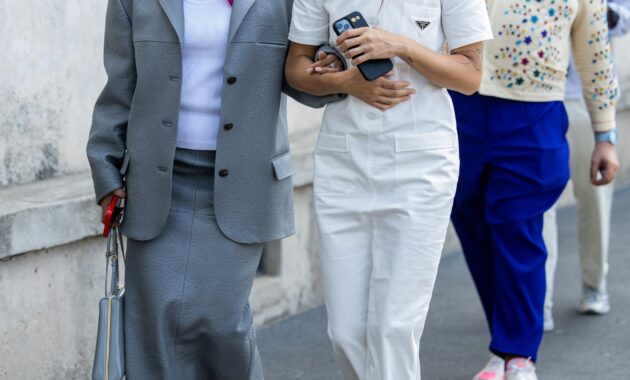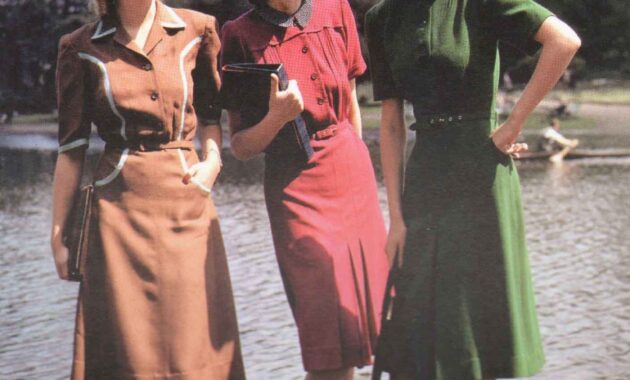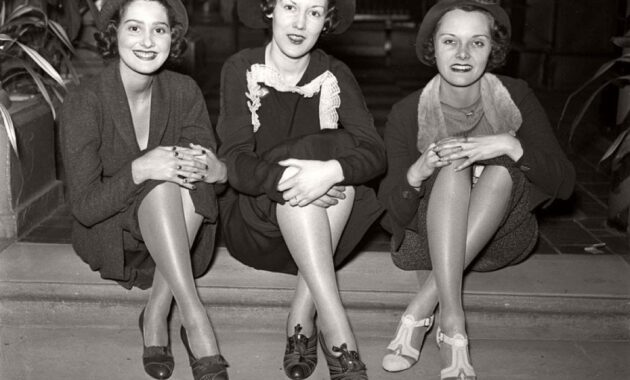The Flower Power Revolution
In the groovy and far-out world of 1960s hippie Fashion, one trend stands out above the rest – the Flower Power Revolution. This iconic movement not only transformed the way people dressed, but also represented a powerful message of love, peace, and unity.

Image Source: pinimg.com
The Flower Power Revolution was all about embracing nature and spreading positive vibes through fashion. The symbol of the flower became synonymous with the hippie movement, representing the beauty and simplicity of life. Flowers were not only worn as Accessories, but also adorned clothing and even painted on faces as a form of self-expression.
One of the most famous instances of the Flower Power Revolution was the Summer of Love in 1967, where thousands of young people descended upon San Francisco’s Haight-Ashbury district to celebrate peace and love. The streets were filled with vibrant colors, flowing fabrics, and of course, an abundance of flowers. It was a time of music, art, and fashion, all coming together to create a sense of community and belonging.

Image Source: saymedia-content.com
The Flower Power Revolution also had a deeper meaning beyond just fashion. It was a rejection of mainstream consumerism and a call for social change. The hippies of the 60s believed in living a simple and sustainable lifestyle, and their fashion reflected this ethos. They often wore handmade and recycled clothing, adorned with patches and embroidery that told a story of peace and love.
One of the key elements of the Flower Power Revolution was the use of vibrant colors and bold patterns. Tie-dye became a popular technique for creating unique and eye-catching designs, with swirling patterns in every color of the rainbow. Psychedelic prints and paisley patterns were also widely embraced, adding a sense of whimsy and playfulness to hippie fashion.
Accessories played a crucial role in completing the Flower Power look. Headbands made of flowers or beads were a common sight, as were round sunglasses and peace sign jewelry. Fringed vests, suede boots, and floppy hats were also popular choices for both men and women looking to embrace the hippie style.
The Flower Power Revolution was not just a passing trend – its influence can still be seen in fashion today. Designers continue to draw inspiration from the 60s, incorporating elements of tie-dye, fringe, and floral motifs into their collections. The spirit of peace, love, and unity that defined the Flower Power movement continues to resonate with people around the world.
So the next time you find yourself drawn to a flowy maxi dress, a pair of round sunglasses, or a colorful tie-dye shirt, remember the Flower Power Revolution and the message of love and peace that it stood for. Embrace your inner hippie and let your fashion choices reflect a sense of joy, positivity, and connection to the world around you. Peace, love, and flowers forever!
Psychedelic Threads and Tie-Dye Dreams
The 1960s was a time of cultural revolution, and nowhere was this more evident than in the world of Fashion. The hippie movement of the era embraced a new way of dressing that reflected their ideals of peace, love, and individuality. One of the most iconic fashion trends of the 60s was psychedelic threads and tie-dye dreams.
Psychedelic threads and tie-dye were the epitome of the counterculture fashion scene of the 1960s. The vibrant colors, swirling patterns, and bold designs of psychedelic clothing captured the essence of the era perfectly. It was a celebration of freedom, creativity, and self-expression.
Tie-dye, in particular, became synonymous with the hippie movement. The process of tie-dyeing involves twisting, folding, and tying fabric before applying different colored dyes. The result is a unique, psychedelic pattern that is as individual as the person wearing it. Tie-dye clothing was often handmade, adding to its appeal as a symbol of anti-establishment and DIY ethos.
Psychedelic threads and tie-dye were not just about fashion; they were a statement. They represented a rejection of mainstream culture and a desire to embrace a more colorful, free-spirited way of life. The bold and bright colors of tie-dye reflected the optimism and hope of the hippie movement, while the swirling patterns mirrored the psychedelic experiences that were so prevalent in the 60s.
One of the most iconic examples of psychedelic fashion in the 60s was the psychedelic poster art of the era. Artists like Peter Max and Wes Wilson created vibrant, trippy designs that were often used to promote rock concerts and other counterculture events. These posters featured bold colors, swirling patterns, and intricate designs that perfectly captured the spirit of the times.
The popularity of psychedelic threads and tie-dye dreams extended beyond just clothing. It influenced art, music, and even the way people decorated their Homes. The psychedelic aesthetic was everywhere in the 60s, from album covers to advertisements to the walls of hipster apartments.
In addition to tie-dye, other psychedelic patterns and prints were also popular in the 60s. Paisley, floral, and geometric patterns all made appearances in hippie fashion, adding to the eclectic and bohemian vibe of the era. Mixing and matching different patterns and colors was not only acceptable but encouraged, creating a truly unique and individualistic style.
The influence of psychedelic threads and tie-dye dreams can still be seen in fashion today. Designers continue to draw inspiration from the vibrant colors and bold patterns of the 60s, updating them for a modern audience. Tie-dye has made a comeback in recent years, with everyone from high-end designers to fast-fashion brands putting their own twist on the classic print.
In conclusion, the 1960s was a time of experimentation and creativity in fashion, and psychedelic threads and tie-dye dreams were at the forefront of this revolution. The bold colors, swirling patterns, and individualistic spirit of psychedelic clothing perfectly captured the free-spirited ethos of the hippie movement. Today, the influence of psychedelic fashion can still be seen in modern design, proving that some trends truly are timeless.
Bell Bottoms and Fringe: Groovy Fashion Trends
The 1960s was a time of cultural revolution, and nowhere was this more apparent than in the world of fashion. One of the most iconic trends to emerge from this era was bell bottoms and fringe – a style that epitomized the free-spirited, groovy vibe of the hippie movement.
Bell bottoms, with their flared bottoms that widened from the knee down, became a staple in every hippie’s wardrobe. These pants were not only comfortable and easy to move in, but they also made a bold fashion statement. Paired with a flowy, psychedelic shirt and some round sunglasses, bell bottoms were the epitome of 60s cool.
Fringe was another key element of hippie fashion. Whether it was on a suede vest, a leather jacket, or a handbag, fringe added a touch of bohemian flair to any Outfit. The swaying strands of fringe captured the spirit of freedom and individuality that was at the heart of the hippie movement.
One of the most famous proponents of bell bottoms and fringe was the legendary rock band, The Doors. Lead singer Jim Morrison was often seen sporting a pair of tight-fitting bell bottoms and a leather jacket with fringe, creating a look that was equal parts rebellious and stylish. His fashion choices not only influenced a generation of music lovers, but also helped to solidify bell bottoms and fringe as enduring symbols of 60s fashion.
Bell bottoms and fringe were not just limited to clothing – they also made their way into Accessories. Handbags, belts, and even boots were adorned with fringe, adding a touch of whimsy to any ensemble. The jingle-jangle of fringe as you walked down the street was a surefire way to turn heads and make a fashion statement.
The popularity of bell bottoms and fringe was not limited to just the hippie subculture. Mainstream fashion designers began incorporating these elements into their collections, bringing the groovy style of the 60s to a wider audience. Suddenly, everyone from teenagers to housewives was rocking bell bottoms and fringe, embracing the spirit of rebellion and individuality that defined the era.
Today, bell bottoms and fringe continue to be popular fashion choices for those looking to add a touch of 60s nostalgia to their wardrobe. Whether you’re attending a music festival, heading to a retro-themed party, or just want to channel your inner hippie, bell bottoms and fringe are sure to make you stand out from the crowd.
So next time you’re looking to add a little groovy flair to your outfit, why not reach for a pair of bell bottoms and a fringe vest? Embrace the spirit of the 60s and let your inner hippie shine through with this iconic fashion trend. Peace, love, and bell bottoms, man!
Peace, Love, and Patchouli: Embracing Hippie Chic
The 1960s were a time of radical change and rebellion, with the hippie movement at the forefront of a cultural revolution. One of the most iconic aspects of this era was the Fashion that emerged from the counterculture movement. From flowing bohemian dresses to fringe vests and bell-bottoms, hippie chic was all about embracing individuality, peace, love, and a connection to nature.
Patchouli oil became synonymous with the hippie movement, its earthy and musky scent embodying the free-spirited and carefree attitude of the era. Hippies believed in the power of natural ingredients and often used patchouli oil as a fragrance to connect with the earth and express their anti-establishment ideals.
Hippie fashion was all about rejecting mainstream norms and embracing a more laid-back and bohemian style. Flowing maxi dresses in vibrant colors and bold patterns were a staple of the hippie wardrobe, often adorned with intricate embroidery and fringe details. Layering was also key, with long, flowing vests and kimono-style jackets adding a touch of whimsy to any Outfit.
Accessories were just as important as clothing in the hippie fashion scene. Headbands, floppy hats, and round sunglasses were must-have items for any self-respecting hippie. Jewelry was also a crucial part of the look, with beaded necklaces, peace sign pendants, and chunky bracelets adding a touch of bohemian flair to any ensemble.
Tie-dye was another hallmark of hippie fashion, with its psychedelic patterns and vibrant colors capturing the spirit of the era. From T-shirts to skirts to flowing caftans, tie-dye was everywhere in the 1960s, reflecting the peace, love, and unity that hippies believed in.
Natural fabrics like cotton, hemp, and linen were favored by hippies for their comfort and environmental sustainability. Many hippies also embraced DIY fashion, repurposing old clothing or creating their own unique pieces to express their individuality and reject the mass-produced clothing of mainstream fashion.
Hippie chic was not just a fashion statement, but a political and social statement as well. Hippies believed in peace, love, and harmony, and they expressed these ideals through their fashion choices. The anti-war movement, the civil rights movement, and the environmental movement all influenced hippie fashion, with many hippies choosing to wear clothing and accessories that reflected their values and beliefs.
The legacy of hippie chic lives on today, with elements of 1960s fashion still influencing contemporary style. The bohemian trend, with its relaxed silhouettes, bold prints, and eclectic accessories, continues to be popular among fashion-forward individuals looking to channel the free-spirited vibe of the hippie movement.
So, next time you reach for that flowy maxi dress, put on your favorite fringe vest, or dab a little patchouli oil behind your ears, remember the spirit of peace, love, and patchouli that defined the iconic 60s hippie fashion scene. Embrace your inner flower child and let your style reflect the groovy and far out ideals of a bygone era. Peace, love, and patchouli – that’s the true essence of hippie chic.
60s hippie fashion


